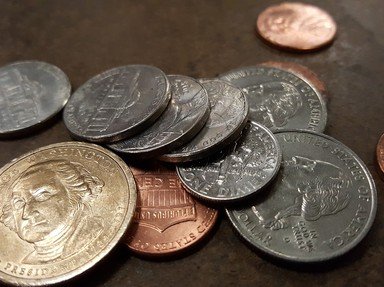Quiz Answer Key and Fun Facts
1. The Indian Head penny, minted 1859-1909, had an eagle on the back in some years. True or false?
2. The Flying Eagle cent came just before the Indian Head cent and was only minted for public circulation two years, 1857 - 1858. Which of the following is true?
3. The Standing Liberty Quarter (1916-1930) had a flying eagle on the reverse, carrying what in its claws?
4. Half dimes, with lady liberty on the front and (usually) an eagle on the back, were minted starting in the late 1700s, but weren't called nickels until decades later, even though they were worth five cents. Why were they called "half dimes" for so long?
5. The Morgan silver dollar, named after its engraver George T. Morgan and minted 1878-1921, shows only Lady Liberty's head on the front and only a bald eagle's head on the back. True or false?
6. The St. Gauden's $20 gold piece (1907-1933) shows the eagle flying in front of what?
7. The Turban Head $10 gold coin, minted 1795-1797, shows the whole eagle without hiding him behind a shield or anything. At first glance, what's remarkable about him?
8. The Philadelphia mint accidentally fatally injured a real bald eagle in 1836 when the eagle got caught in a coining press.
9. Several $10 coins called "eagles" were minted from the late 18th century up through 1933. Why were they called that?
10. When did the first clearly female eagle appear on U.S. coins, for certain?
Source: Author
littlepup
This quiz was reviewed by FunTrivia editor
WesleyCrusher before going online.
Any errors found in FunTrivia content are routinely corrected through our feedback system.

